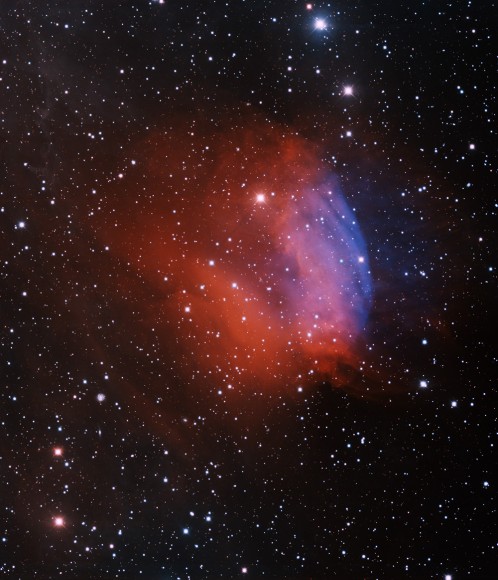
The
Colonial Viper is the primary fighter spacecraft type used by the human protagonists in the
Battlestar Galactica fictional universe. Appearing in both the 1978 original series and the 2003 reimagined series, as well as various derivative works, the single-pilot spacecraft are carried aboard Battlestar
Galactica and are the humans' main tools of defense against the fictional universe's antagonists - the cybernetic Cylon race.
The popularity of the original
Battlestar Galactica series resulted in United States Air Force pilots nicknaming F-16 Fighting Falcons "Vipers".
[1][2] When the reimagined series was created, the Viper was one of the elements that the designers wanted to carry through with minimal alteration.
Original series (1978, 1980)
Viper (1978, 1980)

Original-series Vipers in flight. |
First appearance |
"Saga of a Star World" |
|---|
Affiliation |
Colonial Fleet |
|---|
General characteristics |
|---|
Armaments |
Lasers |
|---|
In the original run of
Battlestar Galactica, the Colonial Viper is the only known fighter flown by Colonial Pilots, referred to as "Colonial Warriors". There is only one known model of Viper seen in the series. Some materials list the Viper as a "Starhound Viper" or "Starhound Class" fighter, based on information in the novelization of "Saga of a Star World".
[3]The Vipers are launched from a long tube in one of a Battlestar's landing bays, assisted by a powered catapult mechanism. It appears that a Battlestar can launch at least three Vipers from each bay at once. Vipers are loaded into the launch tubes atop rails which engage recesses in the bottom of the fuselage between the lower wings. The rail system ensures that the Viper remains on the centerline of the launch tube.
Vipers typically use all three of their engines for powered flight, and can use a "Turbo" boost for greater speed, analogous to a modern fighter plane's afterburner. A pilot can turn on or off each engine by a push button, as seen in the startup sequence anytime a Viper is preparing to take off. Vipers can also reverse thrust for rapid deceleration, a useful tactic when being pursued by enemy ships that would then tend to overshoot the Viper, placing them in a vulnerable position. Vipers are capable of atmospheric as well as space flight, and can land and take off from a planetary surface. Viper engines are designed to collect commonly occurring gases in planetary atmospheres and in space to power the ship's fusion reactor. Vipers are also capable of supporting the pilot for up to two weeks in a form of "suspended animation" for extremely long missions.
The main flight control of a Viper is a three buttoned joystick, similar to a jet fighter. The three buttons are labeled FIRE, TURBO and IM, with the fire button being red. The IM button is the reverse thruster. Notably in "Saga of a Star World" and "The Gun on Ice Planet Zero (Pt. 2)" some Vipers have STORES on the joystick instead of FIRE.
Armament consist of two directed energy weapons (referred to as "lasers" and "laser torpedoes" at separate points in the series, "The Long Patrol" and "Saga of a Star World" respectively) that are linked together to fire simultaneously. They can also be modified to carry fire suppression equipment, as shown in the "Fire In Space" episode where they are used to battle a fire on the
Galactica after the Cylons crash explosives-laden fighters into the launch bays.
In the event of a crash landing, a Viper's cockpit can also be used as an escape pod, separating from the ship and parachuting to the ground. This system does not provide a soft landing—in fact, it can knock the pilot unconscious—but it is effective.
[4] A G-suit is worn under the pilot's uniform for protection against gravitational forces, as seen in "Lost Planet of the Gods, Part I". The flight helmet worn by the Warrior pilots resembles an ancient Egyptian headdress and has no faceplate. Viper pilots from each Battlestar have differing forehead ornamentation on their helmets:
Pegasus pilot helmets feature a flying horse, while
Galactica pilot helmets have a bird design. According to some sources, the Universal wardrobe department came up with designs for other helmets if they had ever been needed-pilots from battlestar
Cerberus would have had a three-headed dog on their helmets, pilots from the
Prometheus would have had a hand holding a flaming torch, and those from the
Solaria would have featured a burning sun.
Gear
Each Viper contains spacesuits for its pilot(s). While not normally worn, they can be brought out and donned if an EVA is necessary (e.g. for emergency repairs).
[5] Vipers also contain emergency survival kits, which include a backpack with rations and a reflective blanket, a parka, and (following the capture and reverse-engineering of Cylon Centurions)
[6] a manual with schematics of Cyloncircuitry.
[4]Variants
A "Recon Version" was piloted by Starbuck in "The Long Patrol". It possessed "nearly double the speed of a regular fighter", along with improved maneuverability, but lacked any armament due to the removal of the laser pumps. It also possessed C.O.R.A. (Computer, Oral Response Activated), a sultry female-voiced, voice-activated computer which doubled as an autopilot.
In the
Galactica 1980 series, Vipers are shown to be newly capable of invisibility, which is explained in the episode "Galactica Discovers Earth". Other
1980 episodes indicate that a Colonial Warrior's uniform is meant to protect against the crushing effects of gravity, similar to an inertial damper. All Vipers also appear to be able to accommodate a passenger in the
Galactica 1980series, as hinted at in the first episode of the TV series. This is seen with Jamie Hamilton swapping between Troy and Dillon's Vipers throughout the series, and with Xavier tricking Troy & Dillon to fly his (sabotaged) Viper in "Spaceball". Vipers also appear to have largish cargo bays for their size as each one carries the Colonial equivalent of a motorcycle.
The 1988 film
Space Mutiny, which used special effects shots from the original
Battlestar Galactica, referred to the ships as "Stingray Vipers".
More advanced, upgraded versions, the Azure class and Scarlet class, appear in Richard Hatch's re-launch novel series and in his attempted revival trailer "Battlestar Galactica: The Second Coming". The Scarlet class features swept forward wings much like the X-29 experimental fighter plane.
In the 2003 Reimagining of the series, an Original Series Viper can be seen in the starboard flight pod "museum".
Deployment
While Vipers can operate from land and (according to the novel) have some refueling bases, they are mostly deployed from Battlestars. Each Battlestar is known to carry 75 Vipers. The
Galacticahosted four squadrons named Blue, Red, Green and Yellow. Members of Silver Spar squadron later joined from the
Pegasus after the Battle of Gamoray.
Reimagined series (2003)
Colonial Viper

A pair of Mark II Vipers flying low (from "The Hand of God"). |
First appearance |
Mini Series, Part 1 |
|---|
Affiliation |
Colonial Fleet |
|---|
General characteristics |
|---|
Armaments |
Kinetic energy weapons
Conventional missiles |
|---|
In the 2003 remake of
Battlestar Galactica, the Viper series of starfighters are the Colonial Defense Force's primary space superiority fighter/attack craft. Capable of atmospheric flight, the Viper is a single-seat sub-light speed craft mounting two kinetic energy weapons (3 on at least one later design), as well as having hardpoints beneath the wings for mounting missiles, munitions pods and other ordnance. There are at least seven versions of the Viper design at the point in history depicted by the reimagined miniseries.
Richard Hudolin, the production designer for the miniseries, has stated that "The only things that we wanted to carry through (from the original filmand series) were the Mark II ships."
[7]Background
The Viper (Mark I) was introduced into Colonial service shortly before the outbreak of the first Cylon War. However, it was the Mark II Viper series, designed specifically for use with the new Colonial Battlestars, that is best remembered. The Mark II was used during the Cylon War, proving a capable fighting vehicle. It is regarded as one of the reasons the Twelve Colonies did not suffer defeat at the hands of the Cylons. The Mark II remained in service after the end of the war, with William Adama commenting that he last saw one, likely one of the last of its type, roughly twenty years after the end of the war.
The Mark II was superseded by newer models, with the Mark VII serving in front-line duties forty years after the end of the Cylon War, as seen in
Battlestar Galactica: The Miniseries. By this time the Viper design had progressively evolved, retaining the basic structural configuration (essential for use with Colonial Battlestars), but with variations in length, equipment, and capability. No information is provided about the intervening designs, but by the time the Mark VII was introduced the Viper design incorporated software-based controls and fully networked systems, providing superior agility, battle management, and flight information for the pilot.
The Mark VII was later upgraded to include Dr. Gaius Baltar's navigational software. Along with the majority of the Colonial Fleet, this software allowed the Cylons to remotely disable the Vipers during the renewed attack on the Twelve Colonies. The few Mark VIIs that survived the disaster were later stripped of this software. The older Mark II fighters, not equipped with the "fly-by-wire" systems of newer Vipers, were unaffected by the Cylon modifications to Dr. Baltar's program. Two squadrons of Mark IIs were present in the
Galactica's starboard flight pod in preparation for the Battlestar's new role as a museum ship, and after the
Galactica's Mark VII squadron was destroyed by the Cylons, the display of Mark II's were refitted for combat by
Galactica's deck crew.
Along with a handful of surviving Mark VII's, the older vipers made up
Galactica's fighter wing during the Cylon sneak attack, the Battle of Ragnar Anchorage, and most of the
Galactica's action prior to the arrival of Battlestar
Pegasus in Season 2 episode "Pegasus", when her ability to manufacture more Mark VIIs was added to the fleet. When the
Pegasus was destroyed in Season 3 episode "Exodus: Part 2", her nearly intact squadrons, all of them composed of Mark VIIs, were transferred to the
Galactica 's air wing. At the time of the episode "He That Believeth in Me" (season 4, episode 3), more Vipers were available than qualified pilots, and trainee pilots were used to fly the extra fighters.
During the Battle of the Resurrection Hub, Vipers of both types were deployed from the Rebel Basestar against the Resurrection Hub and its two basestar escorts. The Vipers were towed into battle with their engines and electronics cold, allowing them to get the element of surprise in the attack. In that battle, both Colonial Vipers and Cylon Heavy Raiders fought side-by-side against the Cylons and once D'Anna Biers was unboxed and rescued, the Vipers, each equipped with at least one nuclear missile, lined up and launched their nuclear missiles into the Resurrection Hub, destroying it.













